
If you get a sample of what it really was like during the hey day of Maine’s Great Age of Logging, make plans to visit the Ambajejus Boom House, on Ambajejus Lake, near Millinocket and Baxter State Park.
It’s been more than 40 years since Maine’s last logging drive, more than 40 years since trees felled in the northern forests were cut into four-foot lengths and floated down rivers such as the Kennebec and Penobscot to the lakes below. There, they’d be corralled and chained into boom bags, each holding between 3,500 and 5,000 cords of pulpwood, and towed onward by boat. If it weren’t for Chuck Harris, the Ambajejus Boom House likely would have been lost to history.
Ambajejus Boom House history
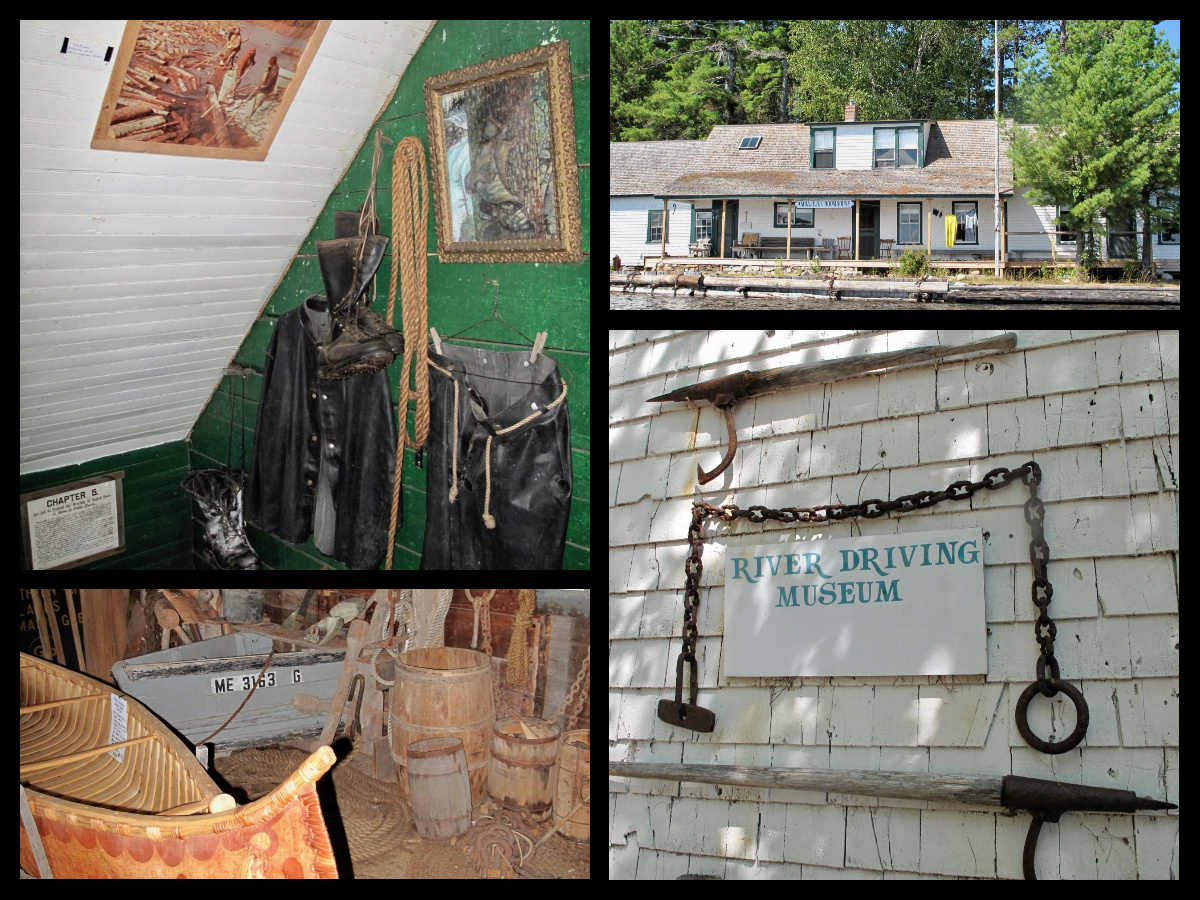
Sited northwest of Millinocket, where the West Branch of the Penobscot River flows into Ambajejus Lake, this National Historic Register-listed property is the only structure remaining from the West Branch drives. Its heritage as a shelter for river drivers and boom workers dates back to 1835.
“This one was built in 1907 and transported across the ice in three sections,” says Harris, the self-appointed caretaker. It remained in use until the last West Branch log drive in 1971.
Harris is a soft-spoken man who has river water running through his veins. He’s worked in Maine’s woods and rivers since he was 18, first as a deck hand on a tow boat on the Chesuncook Lake drives, later on the Kennebec drives, and then for Great Northern Paper.
When the drives ended, he helped clean the waterways, salvaging lost boom logs and dri-ki or driftwood with foreman Harold Kidney, who lived in the camp adjacent to the boom house. One weekend Harris and Kidney returned to the boom house to find the windows broken. “Vandals had made a mess of the property, so we boarded it up,” Harris says.
Labor of love
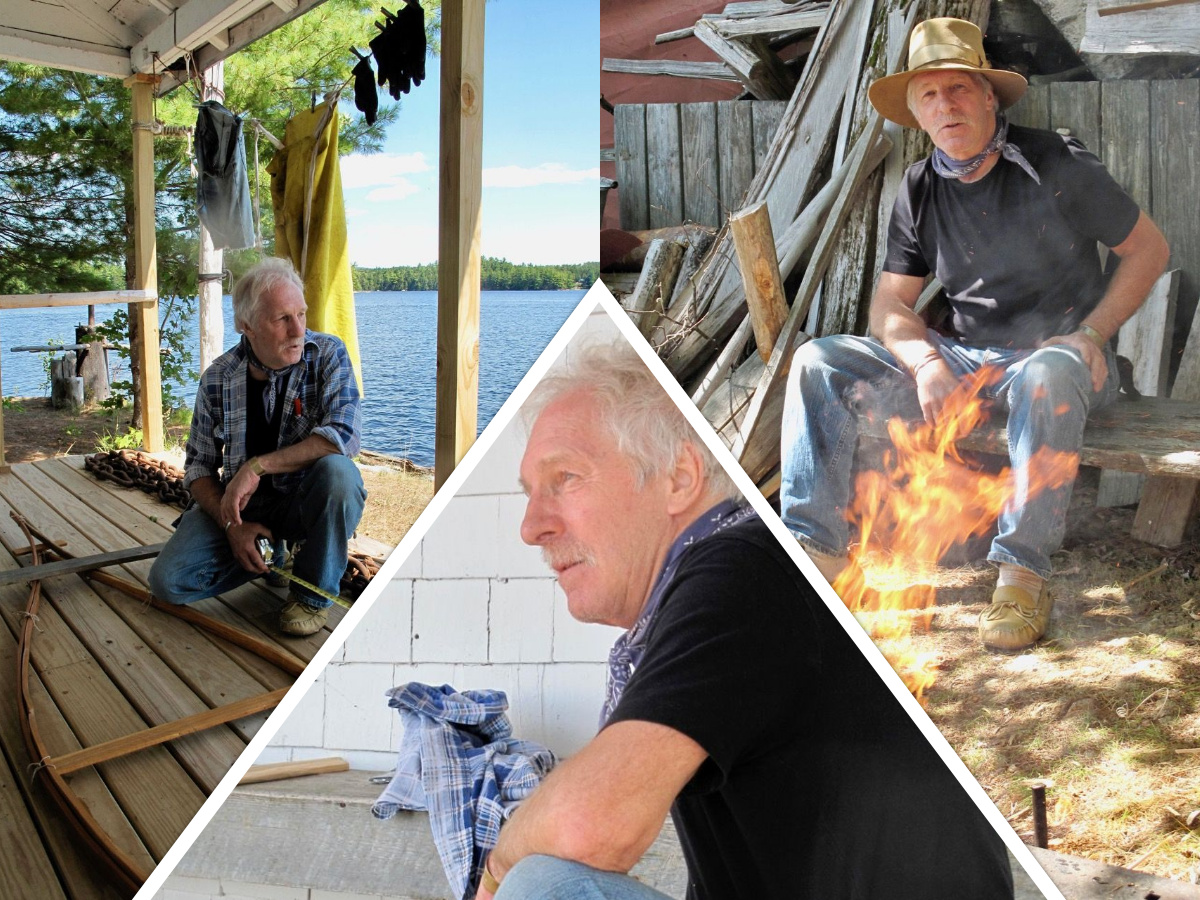
The boom house remained boarded until Harris began repairing it in the mid- to late-1980s. “I knew it was on the National Historic Register, and I’d had it in the back of my mind for a while to fix it into a museum, so the history wouldn’t be lost,” he says.
He’s since replaced all the windows, painted it, replaced bunks that had been burned, and rebuilt the lakefront log restraining wall. “I spent summer after summer working for nothing, I was never paid for being a watchman, it was a labor of love, but it worked.”
To counter vandalism, Harris stopped locking the door. “Out here in the woods, if someone wants in, they’ll just bust down the door,” he says. “In the last 10 years, nothing’s really been harmed.” Now property owner Brookfield Power sends crews to help with repairs, including most recently leveling the building and rebuilding the porch.
Breathing new life into the Ambajejus Boom House

Harris didn’t simply save the boom house, he also outfitted the shed, kitchen, main room, and upstairs bunkrooms with artifacts. “When I worked around the dams and lakes, I had the opportunity to go into old barns and boom houses and collect old tools,” he says. “I had a little shack, and I kept saving things.”
He went to local libraries and researched the history, enlarged old photos, and created signage explaining the purpose and often heritage of the items on display. And he used his artistic background to make paintings of different boom houses and structures associated with the drives. Visitors who take the time to examine the exhibits and read the explanations leave with a solid understanding of Maine’s log-driving heritage.

“Lumbering here made Bangor the lumber capitol of the world at one time, it also made Great Northern Paper one of the best papermakers in the world, and this is how it got started, driving logs down the river,” Harris says.
He saved the Ambajejus Boom House to educate a younger generation about what their forefathers did and what the area is all about. He’s dedicated it to the men he worked with who didn’t have a chance to tell their story.
“Many died on the drives. For every man lost working the woods, 10 drowned on the drive,” he says. ” There was no safety equipment back then. A lot of the old timers I worked with couldn’t even swim.”
River drivers and cowboys

Harris doesn’t guide people through the boom house, but he’s often on site, either working on the house or building a birchbark canoe. He’ll answer questions from those who’ve taken the time to go through the house and read the signage. Sometimes he’ll relate stories from his experiences or passed down from other river men.
“Cowboys are nothing but river drivers on horseback,” Harris says. “When the logs jammed during the drive, sometimes there would be hundreds of cords piled up on rocks. You’d have to get it moving again, then jump back in a boat and get out of the way. If it happened in a gorge, a man would be lowered down with a rope tied around his waist carrying about a six-foot stick with dynamite tied to the end. He’d jam that into the jam, and get hauled out of there before she blew.”
And like cowboys, after a drive, many river men would head to Bangor. “They’d be broke within a month, just like the cowboys off a cattle drive. They’d whooped it up, spent the money, and be back on the drive again.”
Visiting the Maine Boom Houses

Ambajejus Boom House is one of two Maine Boom Houses Harris has restored. The other is the Chesuncook Boom House, which is accessible by road.
There is no admission fee to visit, but Harris is mighty appreciative of those who “slip a dollar or two into the donation box. Every little bit helps,” he says, as there is no fund dedicated to preserving this historic Maine site.
Access to the Ambajejus Boom House is by boat. Experienced paddlers with their own boats can put in at the public landing on Spencer Cove, across from the Big Moose Inn, approximately 8 miles northwest of Millinocket via the Baxter State Park Road; an alternative is to arrange a shuttle and put in at the bridge on Grant Brook Road and paddle downstream to the house, then take-out at the public landing. The trip is not advisable via canoe or kayak on a windy day.
The Big Moose Inn, Cabin & Campground offers a two-hour pontoon boat cruise to the Ambajejus Boom House; call for details. It also offers canoe and kayak rentals.
Guided paddles can be arranged through the New England Outdoor Center. Rates vary with number of paddlers.



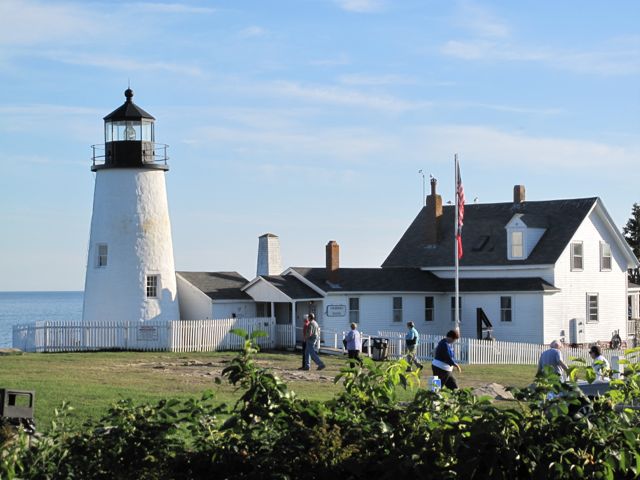

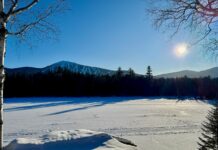

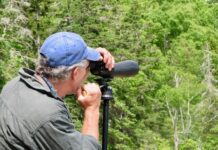
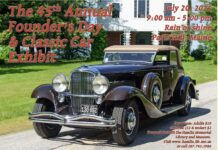




Thank you for this info. I became aware of Ambajejus Boom House via a History Channel discussion of Maine. I am very glad to read more here and sure would like to visit y’all. Money and health may allow this to happen later. We’ll see. Thank you again. In Christ, Dorien and Cheryl de Lusignan
Love the article – we’d just like to clarify; our boat cruises operate by request BETWEEN the first weekend of June and the last weekend of August, weather permitting.
Hello, Chuck Harris ,what a fantastic “Job’ on restoring and bring this place back to “LIFE” as it was when the “LOGGERS were Driving LogS to be processed at the “LUMBER MILLS for Board feet. Thank you all off your valid “TIME” and effort in putting forth the work and the “MUSEUM” you have made here. Hopefully you will beable to put this on “FILM” and produce on line maybe even the “HISTORY CHANNEL” will contact you, as this is such an interesting place off “MAINERS” History of Maine. Thank you again.
“Fantastic Chuck Harris” on the great job restoring “THE AMBEJESUS BOOM HOUSE in MillInocket, Maine. Happy Birthday Chuck your now how old Sixty Five Years of age. Happy Fourth of July too you “Chuck Harris” the Museum came out as a success, and it will be a “TREASURED Landmark” for all “RIVER DRIVERS” too visit and their children and grand children too appreciate in years to follow the “GREAT HISTORY off Mainers, Maine People and it Talented Workers and Historians off Maines Natural Resources. Thank you again “Chuck Harris” Great and Fantastic job and “Happy Birthday” Chuck back at you. Leigh Cote’ “God Bless America”.
I have visited the Boom House a couple of times. I love the history and i love what Chuck has done to make the house look like it did back in the olden days!!!
Hello, Chuck Harris, 22 May 2014 Happy Memorial day to all the Veterans and Log Drivers that have since left with the “Spirit” that has taken place at the base of Mt. Katahdin within Baxter State park. Can’t believe your birthday is right around the corner and what a great job within the Boom House a Treasure of fond memories that have traveled in time. Not too be forgotten. It’s a little chilly up here since the ice is still in soon the fishing will start and the trout will be jumping. The Beaver that have shown man upon how a “DAM” holds water behind it here in Maine for over three hundred years then man from not the State of Maine removed the Dams away from our pulp mills so their is no slowing of “Water” what so ever when the “Ice is melting and the snow leaves the woods. Our Railroad Tracks need to be in place but before we do this our “Dams” need replacing in our “WATER WAYS” here in the State of Maine. The reason for all these floods that have taken place is because the “DAMS” were destroyed bt the preasure and the height of water and how fast the water was traveling from up North. The only engineers we have had here in the State of Maine have been the Beaver, Bear, Deer, Moose, Bobcat, squirrels, Cardinals, Blue Jays, and many more that you don’t see or here within the Timber of Maine. Our foundation in Maine needs to get back to the Basics of Building a Stronger Structure that we have lost in Maine. It would be nice too jump on a train and go to Boston and see the Red Sox play and leave there and go shopping in New York City. Then turn around and travel to Quebec City. We should look at our “DAMS that were taken out by man or by the power of water that man here in Maine can’t Stop. If we pay attention to the animals they will show you what the possibilities are for survival when the storm arrives. When you place a “Canoe” in the water “Birch BARK” of course, what may you see crossing that stream while you are out there in that “Canoe” don”t forget your Paddles and your “Life Jacket” and bring along a bottle off water and some canned fruit and beans when you arrive at the Boom house and if you can remember Chuck likes some good pipe tobacco when he tells his story of his experience on the Log Drives, here in Maine. Thank you, “God Bless America” Leigh Cote’
God Bless you as well Mr. Harris. After reading your note left to me at my families restaurant, Pat’s Pizza, I decided to check out your website on the Boom House. Amazing job you have done. I wish my grandfather “Pat” was still with us as I’m sure he would have enjoyed hearing about all the wonderful work you have done to preserve such a beautiful Maine memory. Thank you. From all of us here at Pat’s Pizza, Thank you for keeping Maine memories alive. We have been in business for over 80 years so believe me, we appreciate others that work hard to allow all to enjoy a piece of what good Maine people have to share.
Yes, my twin sister and I with my dad was there in the 60’s. It was wild. I waited for a moose to come out of the woods but it never did.
Comments are closed.